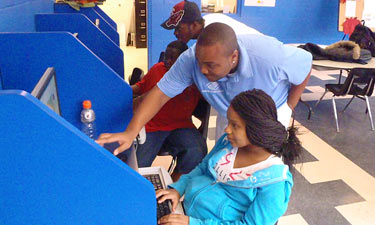 The New Normal. Paradigm Shift. These two phrases are now essential everyday language, but what do they really mean, and what do they mean to parks and recreation? The term "new normal" is relatively recent and applies specifically to the projected slower growth (1 to 2 percent) of national economic output that is expected to continue through this decade, versus the higher growth experienced in the last decade. True or not, perception nonetheless has become reality for governmental jurisdictions. This reality reflects our culture’s paradigm. A paradigm is simply how a culture views the way things work in the real world. Paradigms are unquestioned convictions because the same view is accepted collectively by society. A paradigm shift simply means there has been a change in the way we think, both as individuals and as a collective society.
The New Normal. Paradigm Shift. These two phrases are now essential everyday language, but what do they really mean, and what do they mean to parks and recreation? The term "new normal" is relatively recent and applies specifically to the projected slower growth (1 to 2 percent) of national economic output that is expected to continue through this decade, versus the higher growth experienced in the last decade. True or not, perception nonetheless has become reality for governmental jurisdictions. This reality reflects our culture’s paradigm. A paradigm is simply how a culture views the way things work in the real world. Paradigms are unquestioned convictions because the same view is accepted collectively by society. A paradigm shift simply means there has been a change in the way we think, both as individuals and as a collective society.
How does this affect parks and recreation? The paradigm shift to the new normal drives every decision that is made in how we execute the provision of services to our community. It is evident that national trends in parks and recreation are aligning with this paradigm shift. Examples include efforts to reposition parks and recreation from a non-essential to an essential service, the re-evaluation of mission-related activities and programs, and the movement from being a service provider to a service facilitator.
The City of Clearwater, Florida, is carefully and succinctly transforming from a service provider to a service facilitator role for specific programs. To make this happen, Clearwater changed its supporting underlying belief system that includes a shift from the way the city previously viewed competition, privatization, and partnerships.
The city has a long history of creating sustainable partnerships with private-sector organizations to operate and maintain facilities, but these are primarily operating agreements and have traditionally been with one partner and one facility, such as a golf course or baseball stadium or performance hall. These partnerships have been limited to entities offering operations that historically generate revenue, so that the partner is in a position to realize a positive return-on-investment (ROI). This method, sometimes also referred to as privatization, is successful when the contractual expectations provide for an acceptable level of service and are coupled with consistent monitoring by the governmental agency.
In the past, Clearwater did not develop partnerships with their perceived competition. The city competed with private- and public-sector organizations offering similar services, such as after-school programs, to provide a better product to our customers for less money. Competition in this manner is positive and the city continually evaluates programs, responds expediently to the changing marketplace, and keeps costs low. However, it wasn’t until the city underwent a paradigm shift that it started to seek out and transform competition to a private-public partnership.
An example of this transformation is the operation of the North Greenwood Recreation and Aquatic Complex. For perspective, the complex had a relatively low cost-recovery percentage and attendance in comparison to other facilities, and was in close proximity to two nonprofit organizations offering recreation activities to the same target audience. The two nonprofit organizations were the Boys and Girls Club of the Suncoast and the Dr. Martin Luther King Jr. Neighborhood Family Center.
The city approached both organizations seeking a true partnership to provide efficient comprehensive recreation services. After negotiations, both nonprofit organizations relocated their staff offices and programs to the North Greenwood Recreation and Aquatic Complex. In this case, the city offered a state-of-the-art 25,000-square-foot facility, all building maintenance, and scheduling of all programs for the partners. In order to accommodate three agencies in one facility, the city performed a one-time capital outlay to expand the facility and renovate to provide additional programming and office space. The partners continue to provide programs in the facility.
Since the partners offered similar competitive services, the city was in a position to eliminate similar programs resulting in significant cost savings (approximately $200,000 annually). The partners also realized annual cost savings due to reduction in lease payments and building maintenance equating to about $30,000 annually. In addition to financial benefits, the new partnership has reenergized the community residents, quadrupled attendance, and now serves a broader age spectrum.
Creating a partnership is just the beginning. To be successful, a public-private partnership relies on the following philosophical paradigm:
1. The partnership must be outcome-based and goal-oriented.
2. Each partner must contribute to benefit the whole.
3. Each partner must realize benefits.
4. Each partner must share credit and accept responsibility.
5. Each partner must commit to continuous communication.
6. The partnership must have a definitive beginning and ending time frame.
To effectively operate in our new normal, it is no longer an option to view competition as negative. Transforming competition into partnerships is just one example of how parks and recreation can continue to provide the services our community desires and needs. In Clearwater, it comes down to one basic philosophical value–we don’t have to do everything; we just have to make sure everything is done.
Felicia Leonard is Administrative Support Manager, City of Clearwater.

